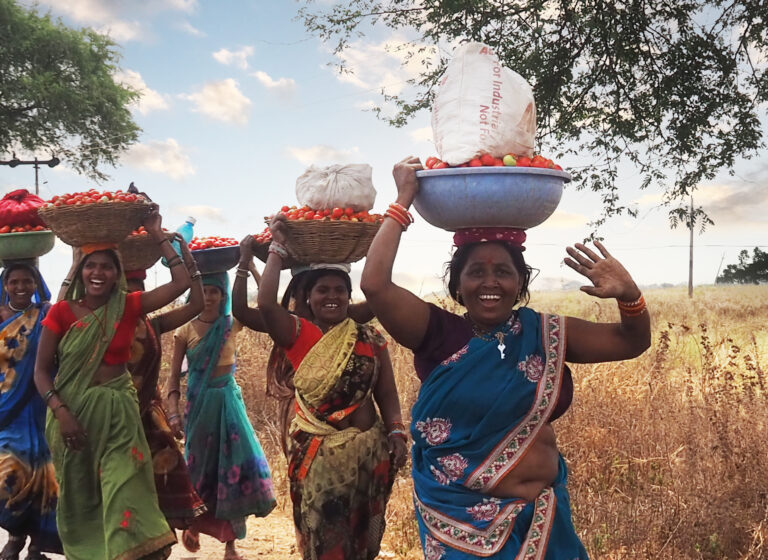Sri Lanka, often called the “Pearl of the Indian Ocean,” enchants visitors with its vibrant landscapes, ancient heritage, and—most enticingly—its kaleidoscope of tastes. The island’s cuisine is a mesmerising tapestry woven with spices, traditions, and stories passed down through generations. Here, every bite carries whispers of history, echoes of culture, and the heartbeat of an island that celebrates life through food. Join us on an unforgettable culinary journey that promises to tantalise your palate and immerse you in the soul of Sri Lanka.
The Symphony of Spices
Sri Lanka’s cuisine owes much of its allure to the symphony of spices cultivated in its fertile soils. Cinnamon, the island’s pride, has been revered since antiquity, drawing traders from as far afield as Arabia and Europe. Cardamom, cloves, and nutmeg add their aromatic notes, creating a medley that elevates simple ingredients into masterpieces.
Imagine the earthy warmth of a curry crafted with freshly ground turmeric, the fiery intensity of dried red chillies, and the subtle sweetness of coconut milk—a harmonious balance that defines many Sri Lankan dishes. But it’s the mastery of tempering spices that transforms everyday meals into unforgettable taste experiences. The sizzling of mustard seeds and curry leaves in hot oil releases an aroma so intoxicating, it feels like a prelude to magic.
Ingredients Rooted in Tradition
Beyond the spices, Sri Lankan cuisine shines with its use of locally sourced, fresh ingredients. Rice, the staple grain, is not just food—it’s a cultural cornerstone, nourishing the body and soul. Complementing the rice are lentils, known as “parippu,” in the form of velvety dhal curry that radiates comfort.
Seafood lovers rejoice in the abundance of fish, prawns, and crab brought daily to market by local fishermen. A must-try is the iconic Ambul Thiyal, a tangy fish curry steeped in a paste of goraka (a sour tropical fruit) and aromatic spices, slow-cooked to perfection. For the vegetarian at heart, jackfruit curry—called “kos”—offers a meaty texture and rich flavour that surprises and delights.
Then there’s the beloved coconut: grated, blended, or transformed into oil, it adds creaminess and depth to dishes. Whether it’s Pol Sambol—a fiery coconut relish bursting with chilli, onion, and lime—or Kiribath, milk rice cooked to ceremonial perfection, coconut remains a quintessential ingredient.
Regional Culinary Gems
Sri Lanka’s cuisine is as diverse as its landscapes, with each region offering distinct taste treasures. The southern coast invites you to relish fresh seafood paired with signature spice blends. Galle’s street markets are brimming with delicacies like hoppers—bowl-shaped pancakes made from fermented rice batter and coconut milk, perfect for scooping up spicy curries.
In the hill country of Kandy, the aromatic spices grown in the lush gardens find their way into elaborate rice-and-curry spreads. Pair your meal with a cup of Ceylon tea, savoured amidst views of emerald tea plantations.
The northern city of Jaffna showcases a bolder take on Sri Lankan cuisine, with fiery curries enriched by Tamil influences. Expect dishes like Kool, a hearty seafood soup, and Pittu, steamed cylinders of rice flour layered with coconut.
A Feast for the Senses – Bringing a Strong Bond Between Food lovers
Sri Lankan cuisine engages all the senses, offering not just taste but texture, aroma, and visual artistry. The crunch of freshly fried cutlets, the velvety smoothness of coconut milk curries, the brilliant reds and yellows of spice blends—it’s a sensory symphony that captivates at every turn.
Even desserts are a celebration of indulgence. Watalappam, a spiced coconut custard infused with jaggery and cardamom, tempts the sweet tooth, while Curd and Treacle—a creamy buffalo curd drizzled with palm syrup—offers a delightful conclusion to any meal.
Where History Meets Cuisine with a custom that is as old as time
Food in Sri Lanka is not just sustenance; it’s storytelling. The dishes are intertwined with the island’s history, bearing influences from Dutch, Portuguese, Indian, and Arab traders. The famous Lamprais—rice and accompaniments wrapped in banana leaf and steamed—is a legacy of the Dutch Burgher community. Meanwhile, the Tamil tradition shines in dishes like idiyappam (string hoppers) served with coconut gravy.
Dining in Sri Lanka becomes an exploration of heritage, as traditional cooking methods, such as clay pot cooking, are still cherished. These techniques not only enhance the taste but also connect diners to the land and its ancient wisdom.
An Invitation to Indulge with us
We invite you to embark on a culinary adventure with us—a journey that promises to awaken your senses, challenge your palate, and deepen your appreciation for Sri Lanka’s rich tapestry of tastes. Together, we’ll venture into bustling markets, meet local chefs, and explore the art of spice blending. You’ll learn the secrets of cooking dishes like fragrant curries and sambols, and even master the delicate art of hopper-making.
But it’s not just about the food; it’s about the moments—the laughter shared over a steaming plate of rice and curry, the stories exchanged with locals, and the memories made against a backdrop of breathtaking landscapes.
Sri Lanka’s cuisine is a reflection of its people: warm, vibrant, and full of life. Each dish is an invitation to celebrate, to connect, and to revel in the joy of discovery. So pack your bags, bring your appetite, and prepare to be enchanted. The island’s culinary wonders are waiting to welcome you.
Sri Lankan Meal Suggestions:
- Breakfast Delights:
- Egg Hoppers (Appa): Bowl-shaped pancakes made with fermented rice flour and coconut milk, served with a perfectly soft egg in the centre. Pair it with Pol Sambol (spicy coconut relish) and Katta Sambol (onion and chili condiment) for a fiery kick.
- Kiribath with Lunu Miris: Creamy milk rice cut into diamond shapes and paired with Lunu Miris—a robust mix of red chillies, onions, and lime juice.
- Seafood Treasures:
- Ambul Thiyal (Sour Fish Curry): Cubes of fish marinated in a paste of goraka (a sour fruit) and spices, then slow-cooked for a bold and tangy flavour.
- Prawn Curry (Isso Curry): Fresh prawns simmered in a rich blend of coconut milk, turmeric, and mustard seeds, garnished with a touch of curry leaves.
- Vegetarian Favourites:
- Jackfruit Curry (Kos Maluwa): Tender green jackfruit cooked in coconut milk with aromatic spices like cinnamon and clove.
- Wambatu Moju (Eggplant Pickle): Fried eggplant slices marinated in a sweet and tangy sauce made with sugar, vinegar, and mustard seeds.
- Regional Specialties:
- Lamprais: A Dutch Burgher-influenced dish featuring rice, meat curry, brinjal moju, and fried boiled egg, all wrapped in banana leaves and steamed.
- Kool: A Tamil seafood soup from Jaffna, brimming with crab, prawns, cuttlefish, and vegetables in a spicy, thickened broth.
- Dessert & Sweet Treats:
- Watalappam: A creamy coconut custard infused with jaggery, cardamom, and nutmeg, offering the perfect end to a meal.
- Kokis: Crisp, flower-shaped deep-fried rice flour snacks that are as delightful to look at as they are to eat.
- Street Food Must-Haves:
- Kottu Roti: A lively mix of chopped flatbread, vegetables, eggs, and curry, tossed together on a hot griddle with a rhythmic clanging that adds to its charm.
- Fish Cutlets: Spicy and crispy spheres of mashed fish and potato, deep-fried to golden perfection.
- Tea Pairings:
- Ceylon Tea with Rulang Aluwa: Enjoy a cup of world-famous Ceylon tea accompanied by Rulang Aluwa, a sweet semolina fudge made with coconut.
These meals are not just dishes but experiences that tell the story of Sri Lanka’s cultural and culinary richness. They’ll serve as sensory anchors for your guests, creating memories they’ll savour long after the tour ends.



